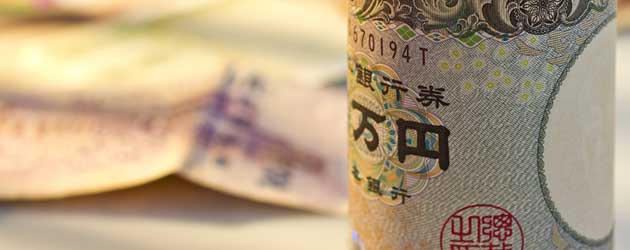
The Pound to Japanese Yen exchange rat (GBP/JPY) is currently trading just below the five-year high of 169.14 that it struck at the beginning of last week.
Late last night it was reported that the Japanese economy expanded by just 0.3% between July and September, which marked a negative revision to the initial estimate of 0.4%. On an annual basis Japanese GDP grew by 1.1% in the third quarter, compared to forecasts of 1.6%.
The Yen weakened in response to the data as traders digested the possibility that the Bank of Japan may look to ease monetary policy further in the future to ensure that Japanese growth continues to accelerate.
Over the past 12 months the GBP/JPY has appreciated by over 30 cents in response to the BoJ’s expansive quantitative easing scheme, which involves around $70 billion of asset purchases per month in attempt to boost economic growth and drag the country out of a stagflationary spiral that lasted for over a decade.
The idea is that asset purchases will make safe haven Japanese government bonds (JGBs) less profitable and therefore less appealing to traders, which subsequently will drive investors into the real economy and help foster stronger economic growth. Additionally, the quantitative easing scheme adds to the money supply, which weakens the value of the Yen, spurs inflation and makes Japanese exports more attractive to foreign buyers.
So far the scheme has had the desired effect with Q1 growth coming in at 1.0% and Q2 GDP printing at 0.9% – the fastest output acceleration among the G7 nations in the first half of the year. The stimulus package has also helped bring CPI inflation up to a 5-year high of 1.1%.
However, with growth decelerating to just 0.3% in the third quarter, there is a growing chorus of dark mutterings among financial traders speculating that the Japanese Central Bank may unleash another bout of QE in 2014 to help maintain growth in the domestic economy, which incidentally is the third largest in the world.
Considering the unprecedented size of the BoJ’s current stimulus programme (in terms of bond purchases compared to GDP) it could be difficult to raise the asset purchasing target. Instead, analysts propose that policymakers may choose to increase the quality of the scheme by taking up more risk, rather than upping the quantity with additional purchases.
In contrast to Japan, British growth has accelerated throughout the year, growing from 0.4% in Q1 to 0.8% in Q3 thanks to a booming housing market, a baffling rise in consumer spending and a profound uptick in private sector output. This change in economic circumstances has also contributed to Sterling’s 30-cent gain against the Yen over the past year.

Comments are closed.